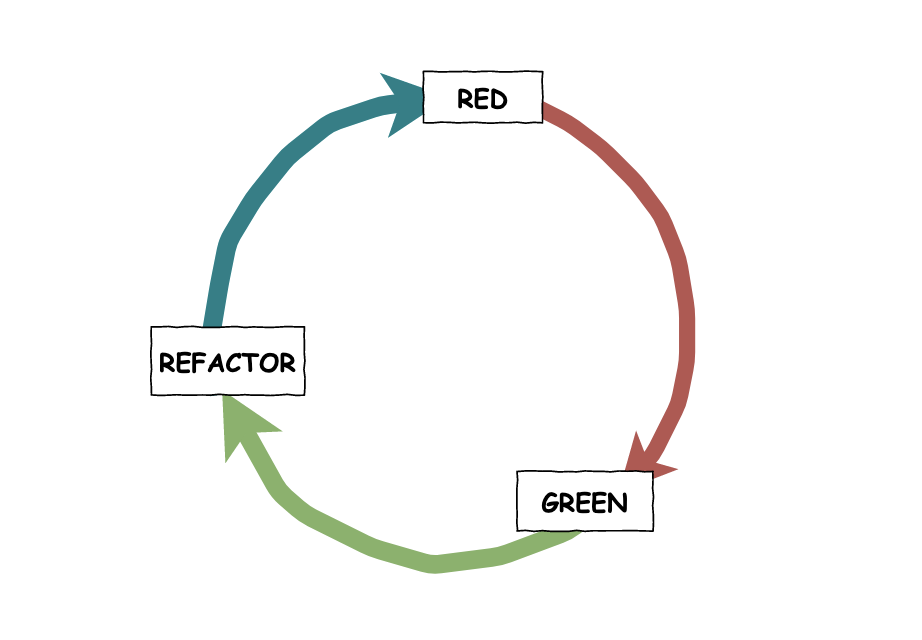In the dominion of software advancement, particularly within the burgeoning field involving artificial intelligence (AI), ensuring code quality is paramount. Among the various strategies and practices designed to enhance computer code quality, the “Red-Green” factor stands away as being a significant contributor. This method, rooted inside the Test-Driven Development (TDD) methodology, performs a crucial part in shaping and even refining AI codebases. In this article, we’ll explore the particular Red-Green factor, its principles, benefits, in addition to its impact in AI code good quality.
Learning the Red-Green Factor
The Red-Green component is really a core aspect of the Test-Driven Development (TDD) routine, which was popularized by Kent Beck. TDD is the development approach in which tests are published prior to the actual signal. The cycle comprises of three major phases: Red, Green, and Refactor.
Reddish colored: This phase entails writing a test for a new feature or a piece of functionality of which does not but exist. The check is designed to be able to fail initially due to the fact the corresponding code has not recently been implemented yet. The purpose of this phase is to be able to define the anticipated behavior of the new feature or functionality.
Green: Throughout this phase, major shifts to composing just enough signal to help make the test move. The goal will be not to make a ideal or fully enhanced solution but to implement the minimal quantity of code important to pass the test.
Refactor: In the final phase, typically the code that has been written to pass quality is improved in addition to optimized. Refactoring entails cleaning up the code, improving its structure, and ensuring this adheres to ideal practices without transforming its functionality. The tests still guarantee that the refactored code still goes by.
The Red-Green Element in AI Development
Within AI development, the Red-Green factor provides unique applications and even benefits. AI tasks often involve sophisticated algorithms, extensive files processing, and complex logic, making code quality and reliability critical. Here’s how the Red-Green factor improves AI code high quality:
1. Early Diagnosis of Issues
By simply writing tests just before code (the Red-colored phase), developers can easily identify issues and even defects early in the development process. see it here helps in catching problems just before they become more significant and more difficult to address. Intended for AI systems, which frequently involve complex methods and models, early on detection of issues is crucial for maintaining the honesty and gratification of typically the system.
2. Making sure Functional Correctness
Typically the Green phase ensures that the code published to pass tests meets the described requirements. In AI development, where demands may be highly certain and nuanced, having a group of tests that clearly specify the expected behavior helps ensure the implemented algorithms in addition to models work appropriately. This process supports in verifying that will the AI system performs as designed and produces exact results.
3. Assisting Refactoring and Optimization
Refactoring is a good essential part associated with maintaining code quality. In AI advancement, where models and even algorithms tend to be iterated and improved, the particular Refactor phase allows developers to clean upward and optimize code without introducing brand new bugs. The constant feedback from assessments ensures that refactoring does not compromise the functionality of the particular AI system, major to more maintainable and efficient computer code.
4. Enhancing Program code Readability and Maintainability
The Red-Green cycle promotes writing thoroughly clean, modular code. By focusing on completing individual tests, developers are encouraged to write smaller sized, more focused pieces associated with code. This do it yourself approach enhances signal readability and maintainability, which is especially beneficial in AI projects with complex and evolving codebases.
5. Supporting Acuto and Iterative Enhancement
AI development generally follows an acuto and iterative technique, where features and even models are constantly developed and refined. The Red-Green element aligns well with this approach, as this supports incremental enhancement and continuous improvement. By breaking down development into smaller, testable units, typically the Red-Green cycle helps iterative progress and even rapid adjustments structured on feedback.
Issues and Considerations
Even though the Red-Green factor offers significant benefits, it is far from without challenges. Here are several considerations for successfully applying the Red-Green cycle in AJE development:
Test Style Complexity: Designing meaningful tests for AJE systems can be challenging, especially if dealing with complex algorithms and big datasets. Developers need to ensure that tests are complete and representative involving real-world scenarios in order to effectively validate AJE functionality.
Data-Driven Testing: In AI development, many tests entail data processing plus model evaluation. Making sure that tests cover various data situations and edge situations is essential with regard to thorough validation. Designers must manage information dependencies and make sure that tests stay relevant and helpful.
Performance Considerations: AJE systems can be resource-intensive, and running extensive tests may impact performance. Programmers should balance typically the need for thorough testing with functionality considerations, optimizing tests to make sure they do not hinder growth progress.
Integration along with Existing Practices: Integrating the Red-Green aspect into existing growth practices may require adjustments. Teams want to align their testing strategies with the Red-Green period and ensure that will it complements various other development practices, such as code reviews and continuous incorporation.
Conclusion
The Red-Green factor plays a crucial role in boosting AI code top quality by promoting early on detection of concerns, ensuring functional correctness, facilitating refactoring, plus supporting iterative advancement. By adhering to the Test-Driven Advancement cycle, AI designers will produce more trusted, maintainable, and high-quality code. During your stay on island are challenges to think about, the benefits of making use of the Red-Green factor set a valuable training for improving the particular robustness and usefulness of AI systems. As AI proceeds to evolve, combining such practices can be essential throughout meeting the requirements for high-quality, dependable software
